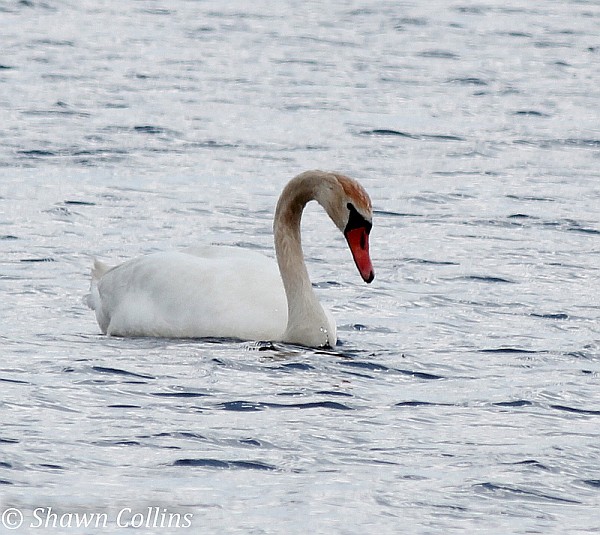
As you can tell by the question, mute swans are controversial.
These big, beautiful, white birds with knobbed orange bills are originally from Eurasia, imported to North America as living decorations for ornamental ponds. Their curved necks and stately demeanor brought their owners a touch of romance and hints of Tchaikovsky’s Swan Lake.
The imported birds were captive but their offspring were not. In the 1900’s mute swans became wildly successful and spread along the East Coast from Maine to South Carolina with smaller flocks in the Great Lakes and Pacific Northwest. That’s when the problems began.
Mute swans are very territorial. When defending their nesting and feeding areas they chase and peck any species that gets in their way, sometimes even humans. Because they’re so large and aggressive they rarely have to fight. Simply raising their wings (like this) can be enough. Mute swans win through intimidation.
The result is that native waterfowl are driven off their breeding grounds and the swans’ large appetites degrade the vegetative habitat. Both problems have contributed to native waterfowl declines.
In 2003 the mute swan’s burgeoning population, increasing 10% per year, led the US Fish and Wildlife Service to propose controlling them in the Atlantic Flyway. Swan lovers, like Save the Mute Swans in Connecticut, responded with local protection laws.
The controversy continues. Native waterfowl decline where mute swans thrive and Audubon chapters ask that the species be controlled.
Like Canada geese and white-tailed deer our society has artificially altered the mute swan’s population. We’ve made too much of a good thing and now we’re coping with the results.
For a good description of mute swans and the controversy surrounding them, see this Tails of Birding blog from 2008.
(photo by Shawn Collins)
Great article, Kate.
Remember when that lone Sandhill Crane was up in Peanut (Derry area) a few years ago and some of us went up to watch and take its picture. On one of my following visits to that area since I felt it is such a LOVELY place, I was calmly walking around the paved path when the Mute Swan pair that seem to live there came out of the water and began checking the grass (maybe for tidbits to eat?). One came up to the path and came right up to me, looking rather agitated, so I proceeded to walk a little faster away from it. Not satisfied for some reason it ran in front of me came up to me and grabbed my knee in its VERY strong beak. I shook my leg and ran.
Then there is the story about the pair of Mute Swans at Rosston on the Allegheny that were shot for NO reason by two young kids just for kicks.
Such lovely swans (love all swan species, tho’) but still “wild” creatures.
Nice photo from a very good young birder/photographer : )
When I was very young, I went to Germany with my parents. I have only intermittently clear memories of that first trip, but perhaps the clearest was of a huge white bird standing in front of me, about my height, looking just like the protagonist in “The Ugly Duckling.” I reached out to stroke its orange beak and–
Snap!
Fortunately, I had good reflexes and withdrew my hand in time to avoid a nip. My parents thought the whole incident was hilarious and a series of startled-looking photos of five-year-old me being attacked by a mute swan cropped up in the family photo album. Still, the incident frightened me and I was more cautious around large birds afterward.
I never saw another mute swan until I studied abroad in Britain many years later. Then, I made a point of courting Hyde Park swans’ attentions, bringing them ice cream cone fragments (which they took, albeit disdainfully) right from my hand and taking pictures of them nuzzling each other with curved necks. When I left London, I thought I wouldn’t see another swan–until the following year, during a Finger Lakes wine tour in New York, when an employee of one of the wineries proudly pointed out the pair kept in an ornamental pond on the premises.
The point of all this blabber? Swans are complicated creatures–in Europe, they’re beautiful, though dangerous, and in North America, they obviously don’t belong. I don’t particularly want to kill them all, yet you’d think that people would know about ecology to stop introducing European animals into places where they will always remain “the Ugly Duckling,” no matter what they grow up to look like.
One of the most effective swan population control measures is to addle their eggs so they won’t hatch but I hear it requires people who aren’t afraid of being attacked by the birds.
Haha, I don’t envy that job.